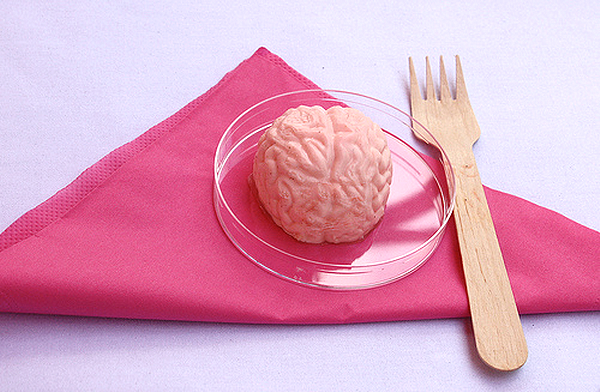Brain Bites are “now and then” updates regarding trends, statistics, and interesting info-bites in personal economics. These tasty tidbits help maintain your edge over an unpredictable future. Think of them as cerebral snacks for the hungry mind!
How NeXters rate
Millennials’ ratings of the positive effects of the news media and religious organizations declined from 2010-2015. In the same period, their views on the positive effects of banks, small and large business, financial institutions, and labor unions improved.
Ref: Pew Research Center
Snoozing (just a skosh) more
For employed Americans, work took up an average of 7 hours, 45 minutes per workday in 2014, up 10 minutes from 2013. They also watched 3 minutes more in TV programming per day and slept 4 minutes more.
Ref: U.S. Department of Labor
What’s hot and what’s not
Six of the top 10 fastest-growing disciplines in the four-year period ending in 2014 were in the science, technology, engineering and math fields, collectively known as STEM. Military technologies, library science, education, and history saw rates drop in the same period.
Ref: CareerBuilder
Checks not accepted here
Starting in 2016, the IRS says it will reject all checks for more than $99,999,999 because check-processing equipment at the nation’s Federal Reserve banks can’t handle checks that big. The superrich will have to wire their tax payments electronically.
Ref: Associated Press
High cost of Whiskers and Spot
Thinking about getting a four-legged companion? Don’t forget to budget for food, vet care, medications, and accessories. The approximate annual cost of caring for a cat is $1,100 the first year and $800 each successive year. For a dog, plan on shelling out $1,400 the first year and $1,000 each successive year. No figures for alligators.
Ref: USAA
Locals need not apply
An estimated 886,000 international students studied at U.S. colleges and universities in the 2013-2014 school year, an 8% increase over the previous school year. Economic growth in other countries and the allure of studying abroad are often cited as factors. The quiet secret is most U.S. universities charge international students full-boat for tuition, bolstering revenue as public funding shrinks.
Ref: Institute of International Education
Star students
Forty-nine percent (49%) of Asian-Americans have a bachelor’s degree, compared with 28% of the general population.
Ref: The Economist
Age to perfection
According to U.N. estimates, by 2060 for every 100 people of working age there will be 30 people who are 65 and older. That’s more than double the ratio of old-to-young people today. NeXters, we thank you.
Ref: United Nations
Losing touch with the military
In 1990, 40% of young Americans had at least one parent who had served in the armed forces. By 2014, only 16% had, and the measure continues to fall. Among leaders, in 1981 64% of Congressmen were veterans; now around 18% are.
Ref: The Economist
It’s what you do
Professional hiring managers were surveyed in 2015 to find out what they really care about when reviewing resumes. Relevant work experience and skills were viewed as the most important aspects. Volunteer experience, GPA, and schools attended were considered the least important factors.
Ref: Addison Group
Never too late to tie the noose
The median age for marriage for American women is now 27, up from 21.5 in 1940. For the men, it is 29.3, up from 24.3 in 1940.
Ref: Pew Research Center
Quick Draw McGraw
In a study of email response times, researchers found that most replies were fast: 90% occurred on the same day the email was received. The median for people 20 to 35 was 16 minutes. For those 51 and older, it took 47 minutes. Hold your comments please.
Ref: Yahoo Labs
Beware the dark side
Cybercrime is growing extremely fast. A 2015 industry consultancy report estimates that it will cost businesses $2 trillion a year by 2019.
Ref: Juniper
Home sweet home
One in 4 adults age 18 to 34 have moved back home in recent years—the highest rate in 4 decades—with the cost to parents for each boomerang child reaching $5,000 each year. Unemployment for this age group is now 7.7% compared to 12.4% about 5 years ago.
Ref: USAA
“Text neck” on the rise
Tipping the head down to text on a cell phone or use an iPad can put up to 60 pounds of pressure on the spine, leading to chronic neck and lower back pain orthopedic surgeons say. This used to affect people in their late 30s or early 40s. Today this is frequently seen in 15- and 17-year-olds, along with accelerated disc disease in tech workers in their late 20s.
Ref: Str8up Kid2Kid
Butt out
Daily cigarette smoking has plummeted among high-school students, falling 50% over the past 5 years.
Ref: National Institutes of Health
If you are tough and persistent, you’ll get a number of chances to succeed.
~ Bill O’Reilly, TV commentator
The information in Brain Bites is sourced from a variety of usually reliable publications. Nevertheless, we cannot guarantee the accuracy or currency of this material and a degree of common sense should be applied before quoting it. If something appears to be too good to be true, it probably is.
Image credit: “Jelly Brain Dissection” by Guerilla Science (2010), licensed/modified (red ring removed) by permission of copyright holder.

